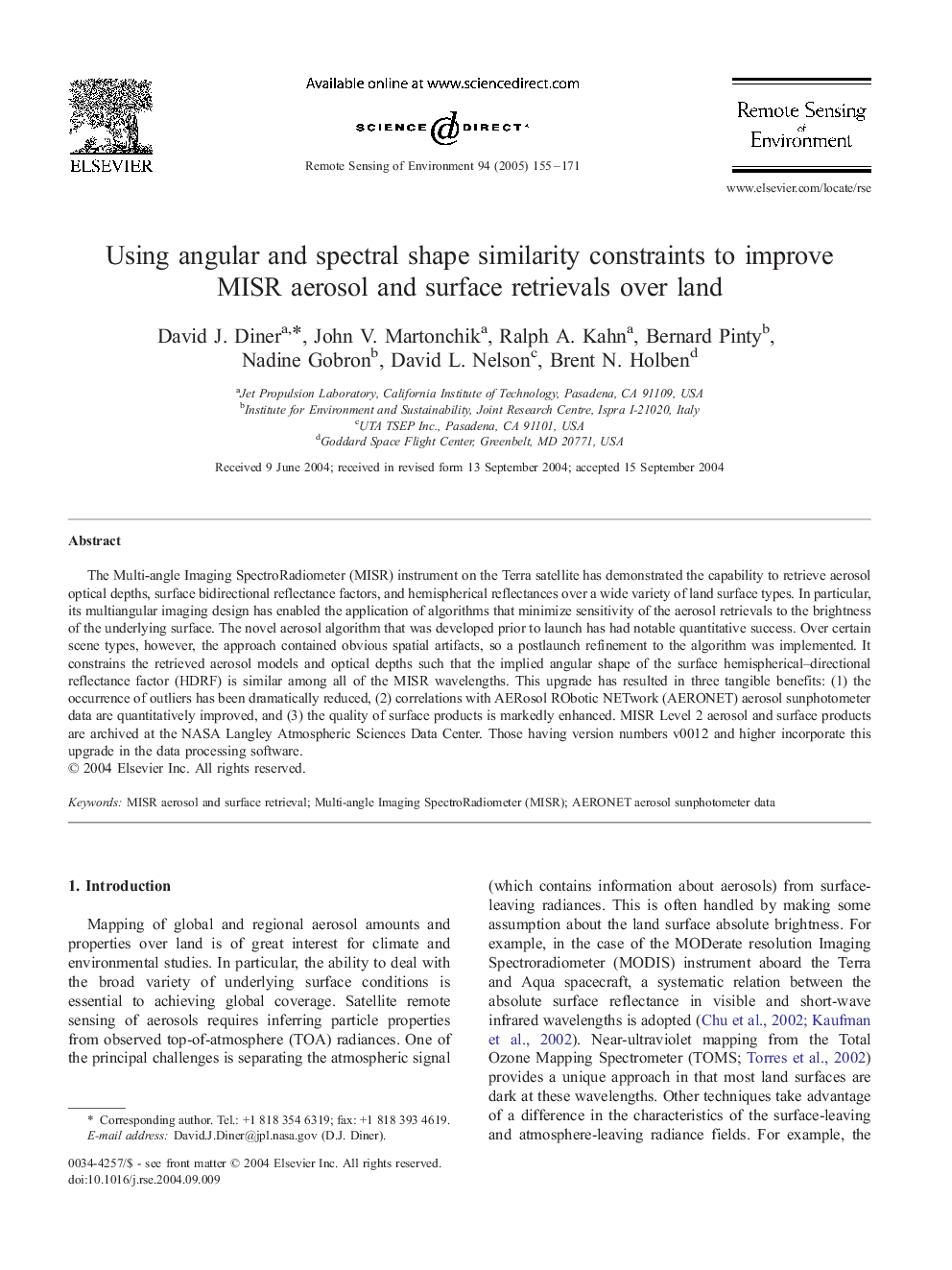| Article ID | Journal | Published Year | Pages | File Type |
|---|---|---|---|---|
| 10114346 | Remote Sensing of Environment | 2005 | 17 Pages |
Abstract
The Multi-angle Imaging SpectroRadiometer (MISR) instrument on the Terra satellite has demonstrated the capability to retrieve aerosol optical depths, surface bidirectional reflectance factors, and hemispherical reflectances over a wide variety of land surface types. In particular, its multiangular imaging design has enabled the application of algorithms that minimize sensitivity of the aerosol retrievals to the brightness of the underlying surface. The novel aerosol algorithm that was developed prior to launch has had notable quantitative success. Over certain scene types, however, the approach contained obvious spatial artifacts, so a postlaunch refinement to the algorithm was implemented. It constrains the retrieved aerosol models and optical depths such that the implied angular shape of the surface hemispherical-directional reflectance factor (HDRF) is similar among all of the MISR wavelengths. This upgrade has resulted in three tangible benefits: (1) the occurrence of outliers has been dramatically reduced, (2) correlations with AERosol RObotic NETwork (AERONET) aerosol sunphotometer data are quantitatively improved, and (3) the quality of surface products is markedly enhanced. MISR Level 2 aerosol and surface products are archived at the NASA Langley Atmospheric Sciences Data Center. Those having version numbers v0012 and higher incorporate this upgrade in the data processing software.
Related Topics
Physical Sciences and Engineering
Earth and Planetary Sciences
Computers in Earth Sciences
Authors
David J. Diner, John V. Martonchik, Ralph A. Kahn, Bernard Pinty, Nadine Gobron, David L. Nelson, Brent N. Holben,
